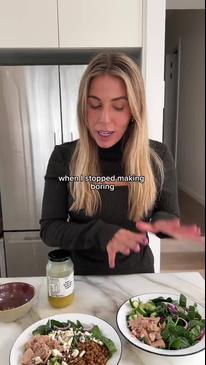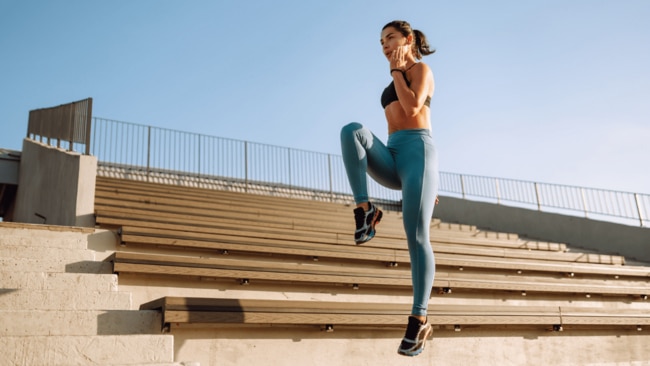Experts say we should be exercising slower to get fit faster
Forget everything you’ve been taught

Lifestyle
Don't miss out on the headlines from Lifestyle. Followed categories will be added to My News.
If you’ve spent the majority of your life following a training approach influenced by the idea that more exertion yields more results, you might want to read this.
Whether you’re training for an upcoming marathon, or simply just want to improve your game on the treadmill at the gym, it’s likely you’ve been wondering what the most efficient way to improve your speed and stamina is.
But contrary to popular belief, being your fittest and fastest self may depend on more than just ruthlessly pushing yourself to the brink during training.
As per Body+Soul’s Health of the Nation report, 21% of Australians ran in the last 12 months, but just under half of us would describe our fitness level as good.
While it may seem counterintuitive, experts say that purposefully pulling back in your training is the most effective way to help your body keep up with a higher-intensity output during a race or event.

“Training at a slower pace is a method used by athletes to build a stronger aerobic base – the body becomes a lot more efficient at using oxygen, which improves our overall endurance,” explains Hannah Eden to Vogue.
Eden, who is an iFit running coach and elite Iron Man athlete, first discovered the benefits of this pulled-back approach to training while attempting to prepare for her own triathlon.
“I was blown away by how long I could keep up a higher intensity output when I really hadn’t been training at this intensity at all. So it sounds counterintuitive to run or cycle slowly, but it absolutely works. It’s a pretty crazy feeling.”

How does lower-intensity training work?
Essentially, lower-intensity training helps to increase blood flow to the muscles, enhancing oxygen uptake. In turn, this allows the body to better adapt while performing high-intensity activities, delaying fatigue so it can train for longer under physical stress.
Eventually, the cardiorespiratory system becomes more efficient, supplying more oxygen and nutrients to your muscles via the bloodstream.
“Training slow actually enhances the body’s ability to metabolise fats to use as a main fuel source, helping you improve your cardiovascular efficiency,” says Eden.
Higher-intensity activity at a higher heart rate uses mostly carbohydrates (known as glycogen) as fuel. This energy source is capped at around 1500 to 2000 calories each day, however, limiting how long we can train in this style before fatigue sets in. Lower-intensity slower training instead uses stored fat for energy, an almost infinite source within the body.
“Slow training means that your body becomes better adapted to burning fat, which will help your body’s fuel consumption for faster runs and rides. Utilising fat can help you avoid the energy crashes that come when your body uses carbohydrates for fuel,” Dr Raija Laukkanen, director of Science Collaborations at the Polar Research Center, tells Vogue.

How do you approach slow training?
The most commonly used method is known as ‘zone training’, where athletes split their workout effort into five zones – each representing a different level of heart rate intensity.
“Zone two is ideal for slow training. Whereas zone one is generally considered a warm-up, zone two should feel relatively easy – where you can maintain a low heart rate and hold a conversation. It’s the foundation of cardiovascular fitness,” explains Dr Laukkanen.
If you don't have a heart rate monitor or smartwatch handy, there’s a simple way to monitor your heart rate and stamina during a workout to ensure you don’t overexert yourself. known as the ‘talk test’, experts say you should be able to hold a conversation easily during a slower training session, and should leave you feeling like you have more to give.
As for what percentage of your training sessions should be low intensity when training for a big race or event, it’s recommended you follow an 80/20 split.
“This refers to spending 80 per cent of your training at a lower intensity, and 20 per cent at a higher intensity. This balance is extremely crucial because it allows the body to build endurance without overstraining,” Eden explains.
More Coverage
Originally published as Experts say we should be exercising slower to get fit faster





